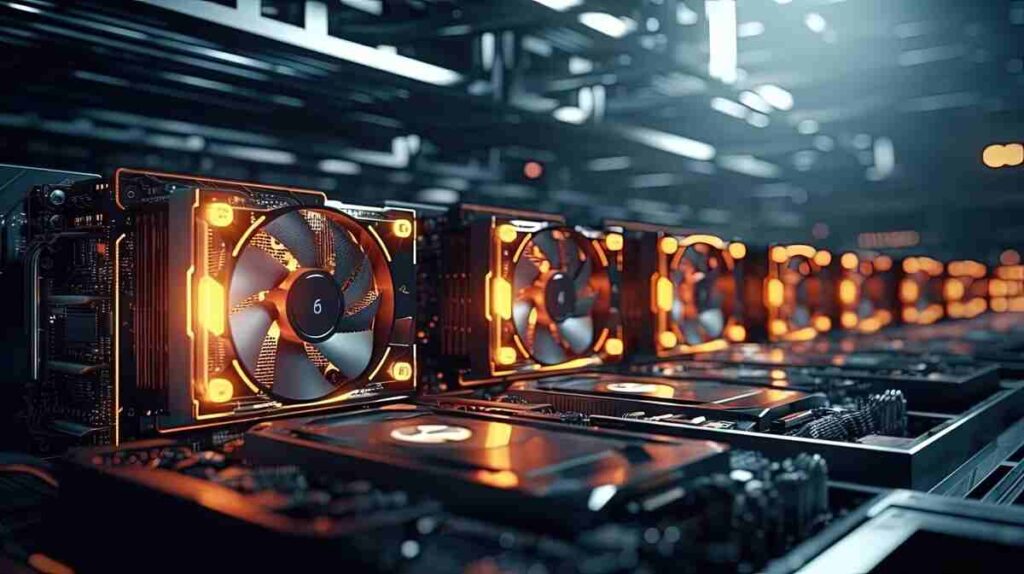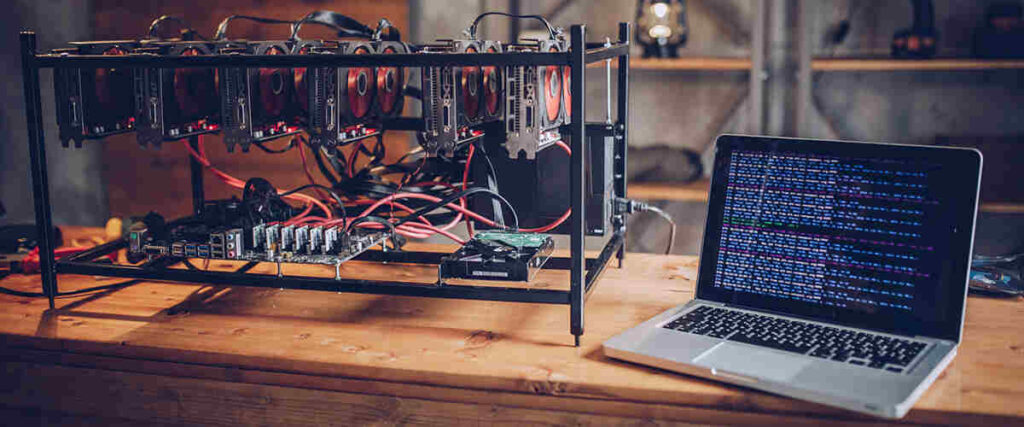Optimizing Crypto Mining Setups for Maximum Efficiency
Crypto Mining Setups

Crypto Mining Setups In the fast-evolving world of cryptocurrency, crypto mining has become a cornerstone of the industry, enabling the decentralized nature of blockchain networks. For individuals and organizations looking to delve into this lucrative field, setting up an optimized crypto mining rig is essential for maximizing profitability and ensuring long-term sustainability. This article delves deep into the intricacies of crypto mining setups, providing you with the most comprehensive guide to outrank any other source on this topic.
Understanding the Basics of Crypto Mining Setups
Before diving into the specifics of setting up a crypto mining rig, it’s crucial to grasp the fundamentals of crypto mining. In essence, Crypto Mining Setups is the process of validating transactions on a blockchain network by solving complex cryptographic puzzles. Miners use powerful hardware to compete with each other in solving these puzzles, and the first to solve one adds a new block to the blockchain, earning a reward in the form of cryptocurrency.
Types of Mining Algorithms Crypto Mining Setups
The most common include:
Proof of Work (PoW): This is the most widely used algorithm, where miners compete to solve cryptographic puzzles.
Proof of Stake (PoS): Instead of solving puzzles, miners are chosen based on the number of coins they hold.
Equihash: A memory-intensive PoW algorithm used by coins like Zcash.
Understanding these algorithms is vital because the choice of hardware and mining software often depends on the algorithm your chosen cryptocurrency uses.
Choosing the Right Hardware for Crypto Mining Setups

The heart of any crypto mining setup is its hardware. The type of hardware you choose can significantly impact your mining efficiency, profitability, and power consumption. The primary types of hardware used in crypto mining are:
1. Application-Specific Integrated Circuits (ASICs)
ASICs are highly specialized devices designed to perform a specific task—in this case, mining cryptocurrencies. These are the most powerful and efficient mining devices available, particularly for cryptocurrencies like Bitcoin. However, they are also expensive and have a limited scope, as they can only mine a specific algorithm.
2. Graphics Processing Units (GPUs)
They are particularly popular for mining altcoins like Ethereum. GPUs offer a balance between efficiency, cost, and flexibility, making them a popular choice for both beginner and experienced miners.
3. Central Processing Units (CPUs)
While not as powerful as GPUs or ASICs, CPUs can still be used for mining certain cryptocurrencies, particularly those that are less resource-intensive. They are generally not recommended for serious mining operations due to their lower hash rates and higher power consumption.
4. Field-Programmable Gate Arrays (FPGAs)
FPGAs offer a middle ground between GPUs and ASICs, providing customizable hardware that can be tailored to specific mining algorithms. They are more efficient than GPUs but less so than ASICs, making them a niche choice for miners who need flexibility without sacrificing too much efficiency.
Setting Up Your Crypto Mining Setups Rig

This involves several key steps, including assembling the hardware, installing the necessary software, and optimizing your setup for maximum efficiency.
1. Assembling the Hardware
Motherboard: Choose a motherboard that supports multiple GPUs if you’re going the GPU route.
Power Supply Unit (PSU): Ensure your PSU can handle the power requirements of your entire rig.
Cooling System: Effective cooling is critical to prevent overheating and ensure the longevity of your hardware.
Cables and Connectors: Proper cabling is essential for stable performance and safety.
2. Installing the Mining Software
The choice of mining software depends on the hardware and cryptocurrency you’re mining. Popular mining software options include:
CGMiner: One of the oldest and most popular mining software, compatible with ASICs and GPUs.
NiceHash: A user-friendly option that supports a wide range of cryptocurrencies.
Claymore: Highly efficient software optimized for dual mining (mining two cryptocurrencies simultaneously).
3. Configuring the Software
After installing the mining software, you’ll need to configure it to connect to a mining pool and start mining. This involves:
Joining a Mining Pool: Mining solo is often not profitable due to the high competition. Joining a mining pool allows you to combine your hash power with others, increasing your chances of earning rewards.
Setting Up Wallets: Ensure you have a secure wallet to store your mined cryptocurrency.
Optimizing Performance: Tweak your software settings to optimize your rig’s performance, balancing hash rate, and power consumption.
Optimizing Your for Maximum Efficiency Crypto Mining Setups

Efficiency is the key to profitability in crypto mining. Even small improvements in efficiency can lead to significant gains over time. Here are some strategies to optimize your mining setup:
1. Power Consumption
Electricity is the most significant ongoing cost in crypto mining. Reducing power consumption without sacrificing performance is crucial. Consider the following:
Undervolting GPUs: Reducing the voltage supplied to your GPUs can significantly reduce power consumption without affecting hash rates.
Efficient Cooling: Implementing efficient cooling solutions can reduce the power required for cooling, freeing up more power for mining.
2. Overclocking
Overclocking involves running your hardware at a higher speed than its default setting to increase hash rates. While this can boost performance, it also increases power consumption and the risk of overheating, so it must be done cautiously.
3. Regular Maintenance
Regular maintenance is essential to ensure your mining rig operates at peak efficiency. This includes:
Cleaning Dust: Dust buildup can cause overheating and reduce efficiency.
Updating Software: Keep your mining software and firmware updated to benefit from the latest optimizations and security patches.
Security Considerations for Crypto Mining Setups

Security is a critical aspect of crypto mining, given the value of the assets involved. Here are some best practices to secure your mining operations:
1. Securing Your Wallets
Use hardware wallets or other secure methods to store your mined cryptocurrency. Avoid keeping large amounts of cryptocurrency in online wallets, as they are more vulnerable to hacking.
2. Protecting Your Network
Use firewalls and other security measures to protect your setup from external threats.
3. Regular Backups
Regularly back up your mining configurations and wallets to avoid losing your assets in case of hardware failure or cyberattacks.
Conclusion
Setting up and optimizing a crypto mining rig requires careful planning and ongoing maintenance. By choosing the right hardware, optimizing your setup, and implementing robust security measures, you can maximize your mining efficiency and profitability. The rapidly changing landscape of cryptocurrency means that staying informed and adapting to new developments is crucial for long-term success.
Click Here: Largest Mining Companies


erkulautousa
erkulautousa
erkulautousa
erkulautousa
erkulautousa
erkulautousa
erkulautousa
erkulautousa
erkulautousa
erkulautousa
erkulautousa
erkulautousa
erkulautousa
erkulautousa
erkulautousa
erkulautousa
erkulautousa
erkulautousa
erkulautousa
erkulautousa
erkulautousa
erkulautousa
erkulautousa
erkulautousa